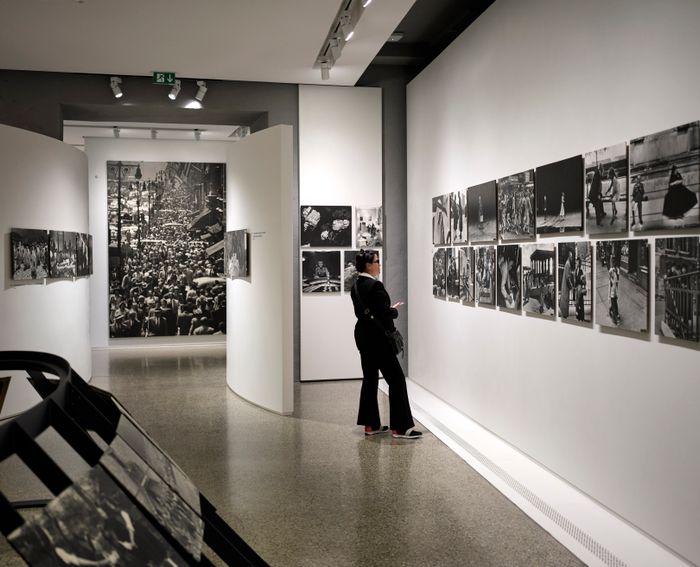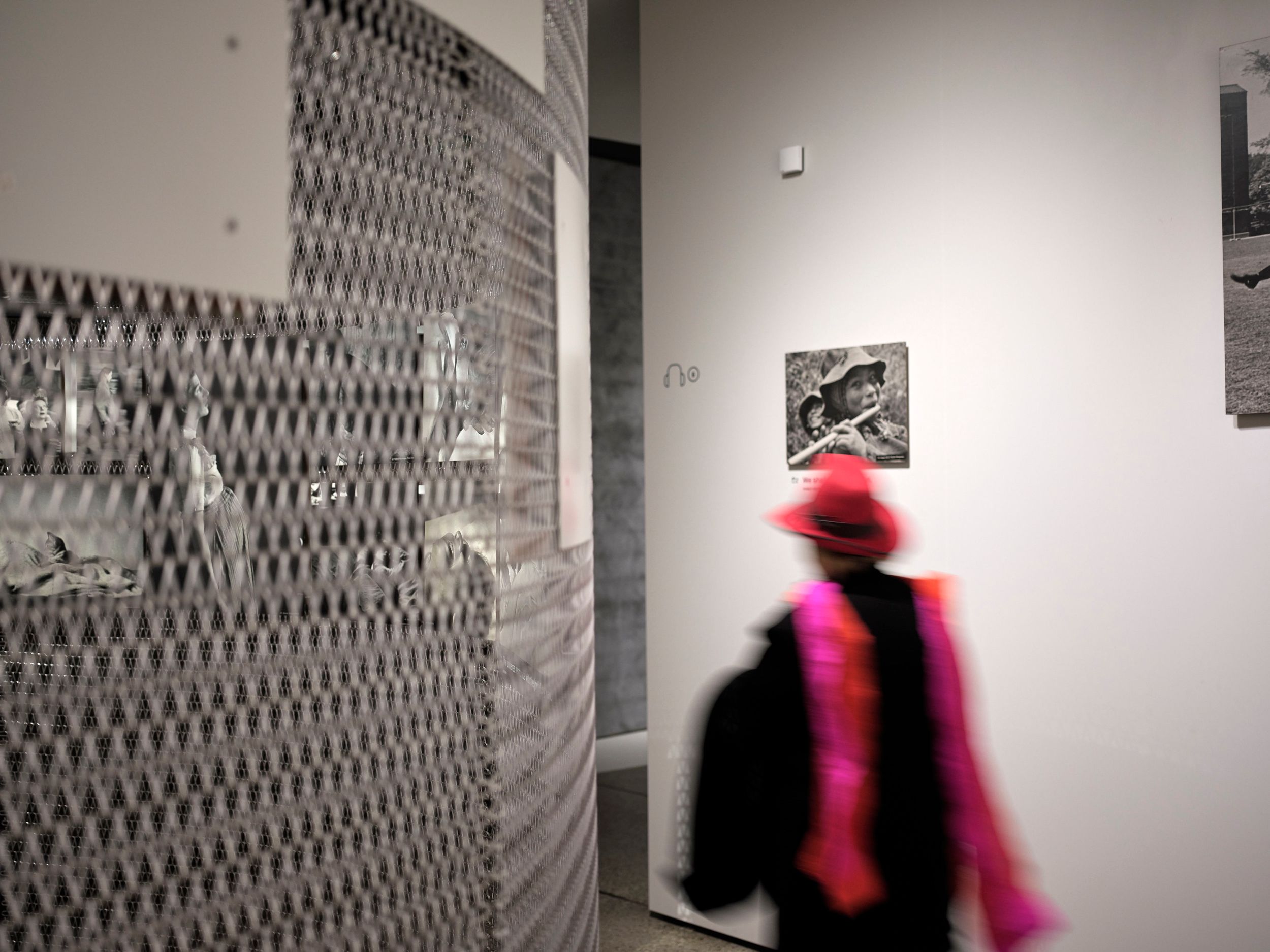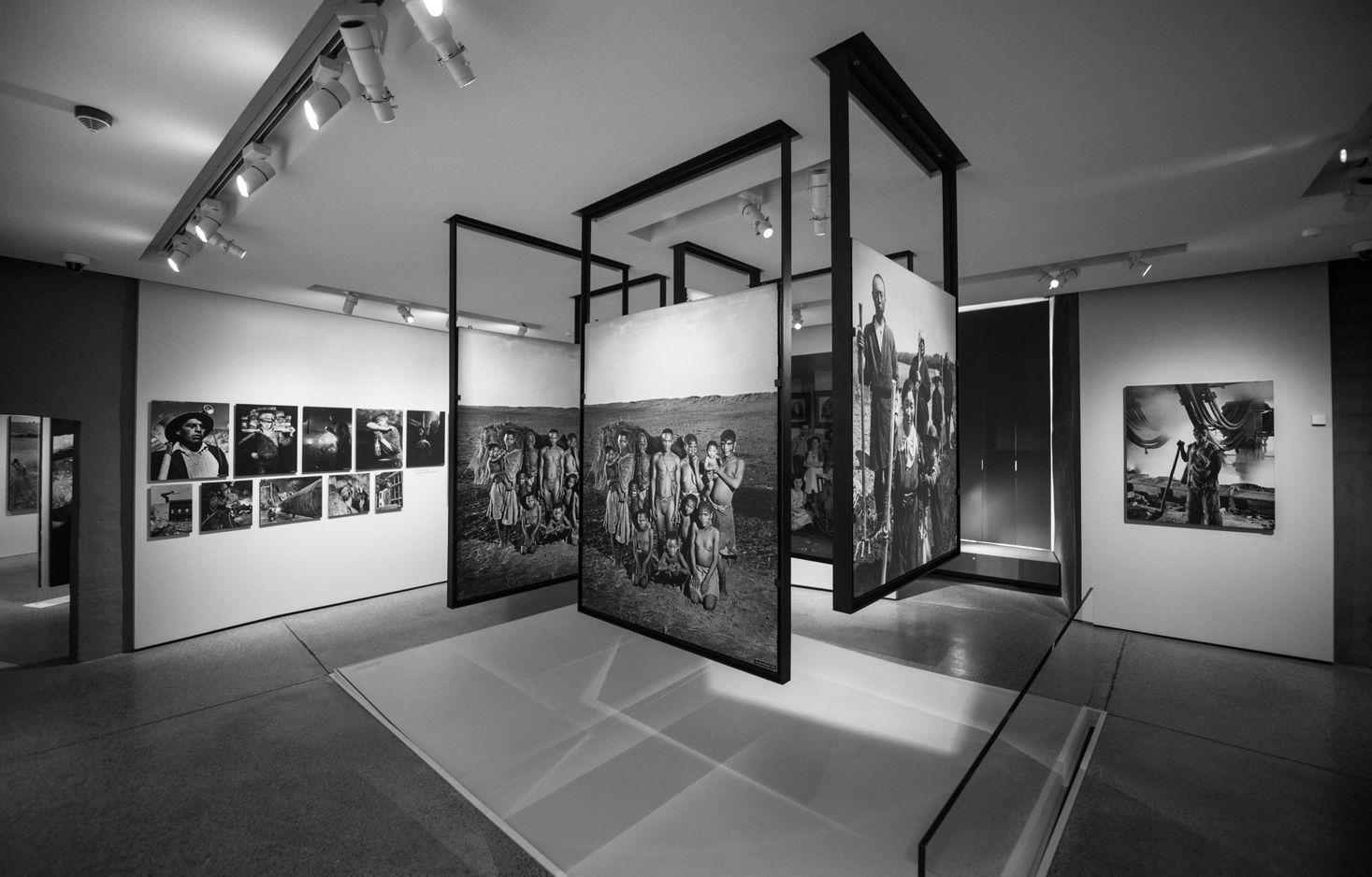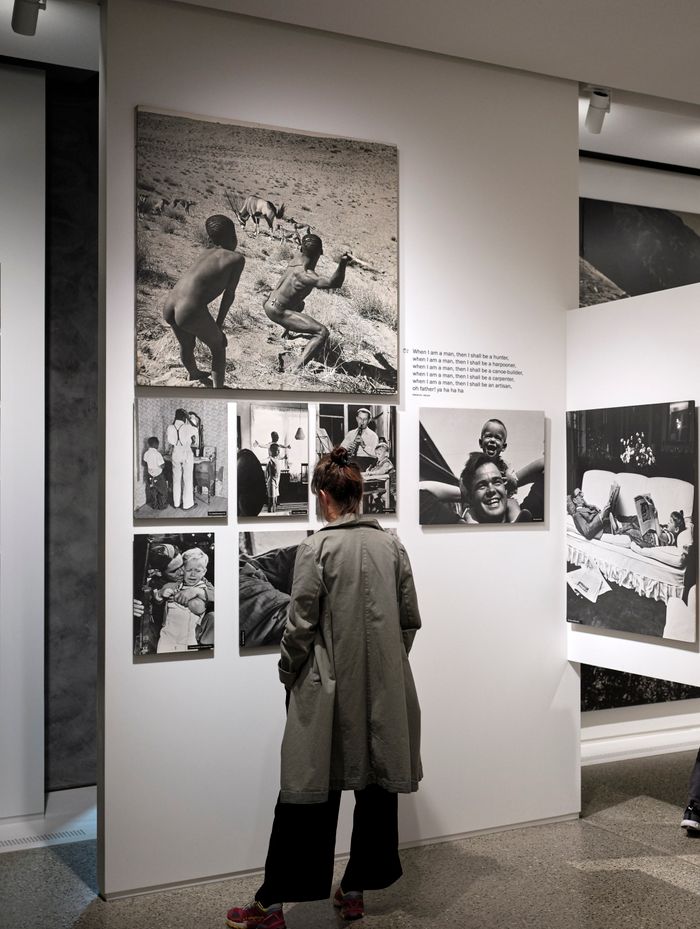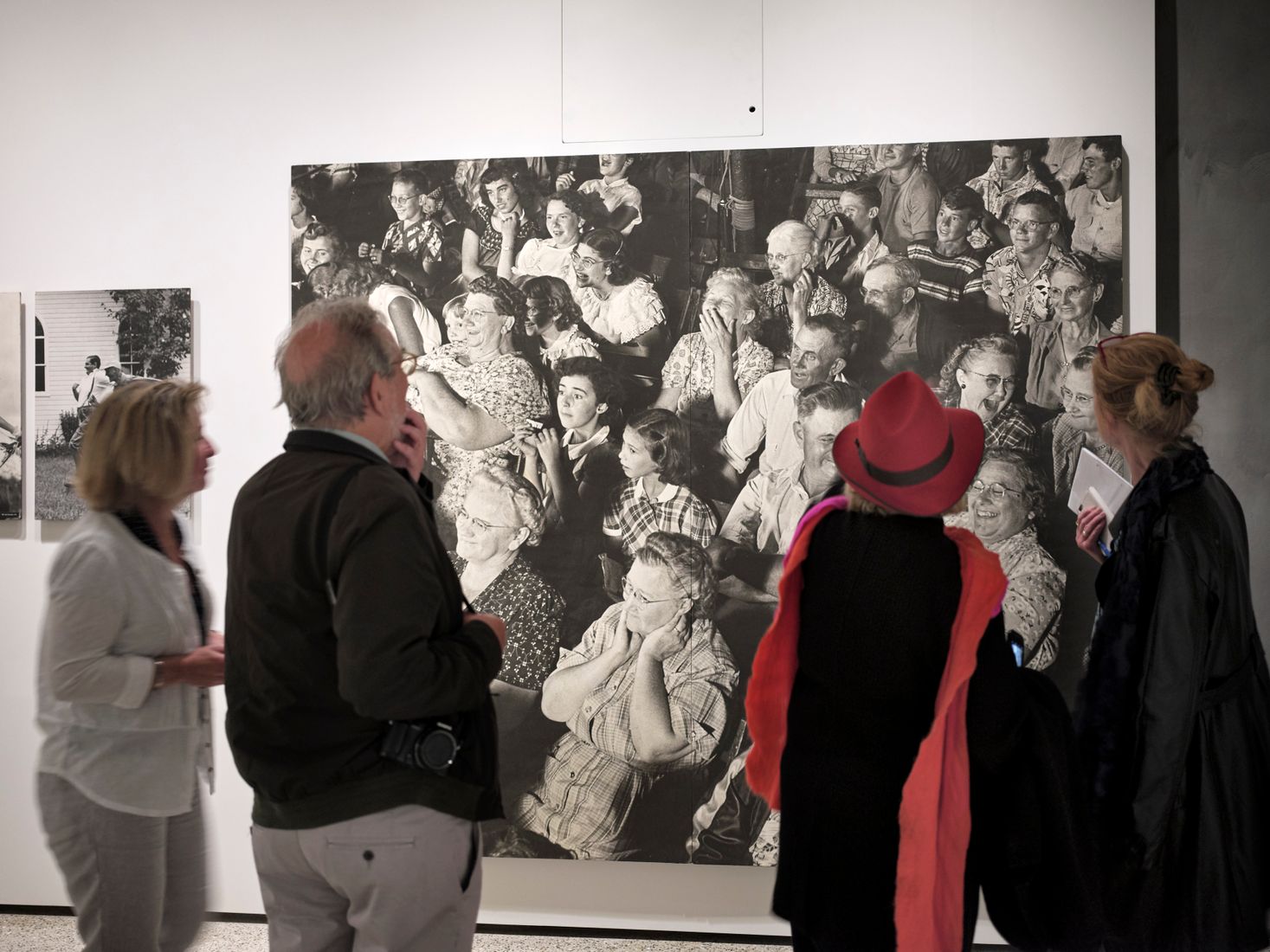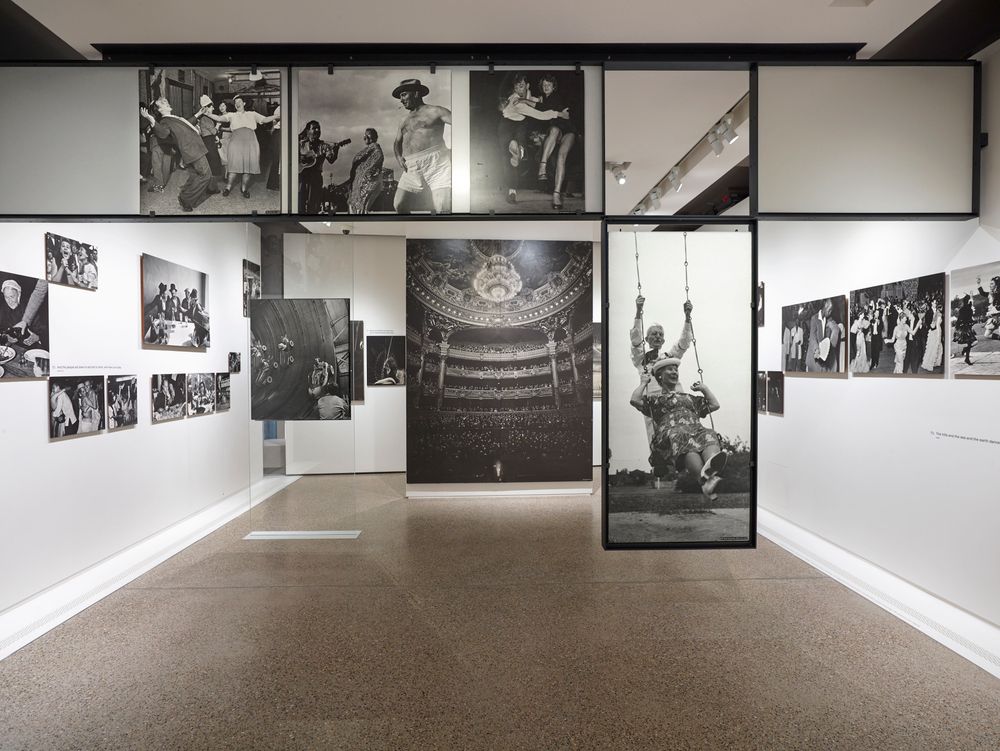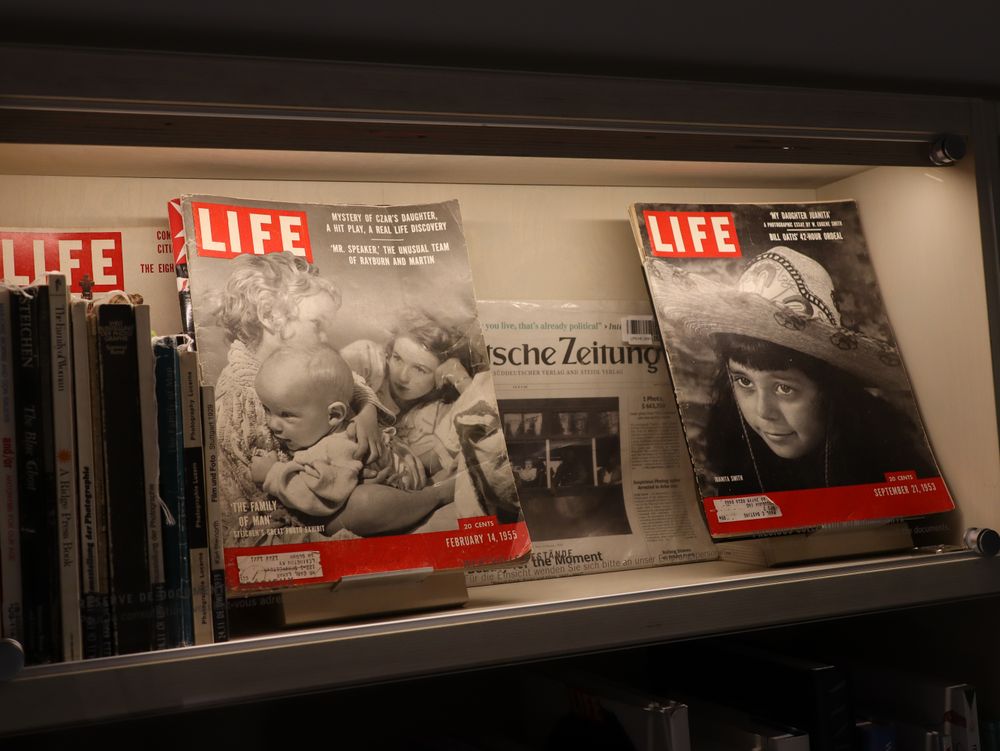A visit to “The Family of Man” exhibition is a highly intense experience. Perfectly staged, skilfully lit, it is an understated total artwork that appears to have grown naturally. Every visit reveals something new.
What should a portrait of humanity look like? What are the key themes? Each picture in the exhibition seems to hang exactly where it belongs, giving the impression of an organic entity. Accompanying the pictures are passages from Shakespeare, James Joyce, Thomas Paine and Lillian Smith. They’re just there, alongside, with no explanatory captions. “Deep inside, in a silent place where a child’s fears crouch.” This quote from the writer Lillian Smith, printed in white on black, appears alongside pictures of children, girls and boys, who are obviously poor, who look at the camera in resignation or despair, standing behind barbed wire, in front of a bleak landscape, sometimes with their mothers, in whose eyes you can also see that life is hard. Three little girls stand in front of a small, isolated house surrounded by an overgrown meadow. They grip the fence and stare at me gravely, the older two dark-haired, the youngest blonde. It makes me think of my own girls. Two tall brunettes, one small blonde. They are about the same age as the girls in the photo, about whom I know nothing. Neither what became of them nor how long they lived. And yet I feel a connection with them. Simply because I have seen them.
